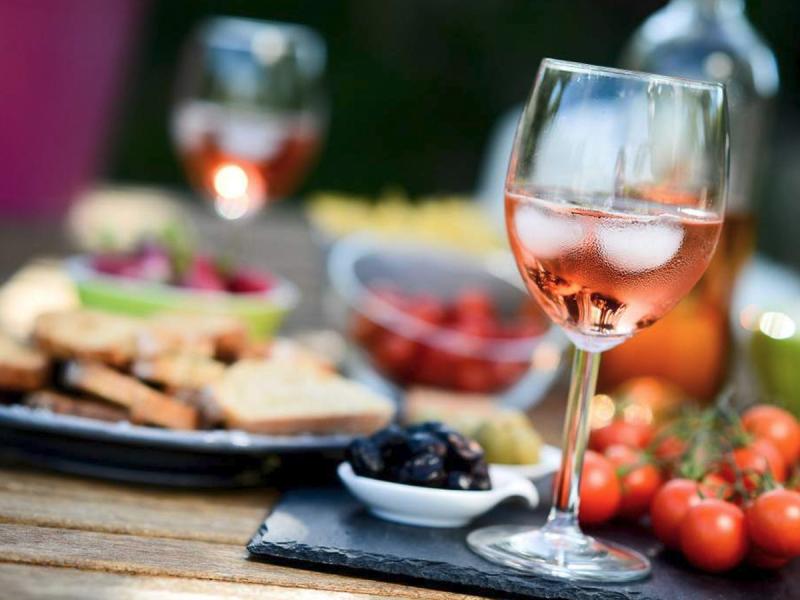I decided to avoid politics in this column in hopes a letter to the editor may be posted. My e-mailbag has been very active lately, and I have been responding to all directly. That written, Saul had a great question of general interest. He asked about an ad for second growth (Deuxieme Grand Cru) Chateau Montrose St. Estephe Bordeaux 2014 at $279 for a magnum (two bottles in one). Don’t lose it. I know that $279 for two bottles sounds expensive, but it’s like one month’s Verizon for three and brings far more pleasure. A cup at Starbucks costs more than two gallons of fuel.
Saul, the 2014 was highly rated from 95-97 points by most mainstream writers, with a window of 2021-45. I am more inclined toward 91 points and a much shorter window. The color is too light, tannins are too soft and the acidity is a bit higher than I was looking to find for such a highly touted release. En primeur (in the barrel), the writers claimed, “The blend of 61 percent Cab, 30 Merlot, 8 Cab Franc and 1 Petit Verdot was a dark, deep color with intense black fruit, currant nose, a touch of salt air and barrel notes with a pleasing long finish.” I found the wine medium claret-colored with currants, plums, blackberry, licorice, vanillin, and chocolate nose, medium soft on the palate, with slate minerality and slightly elevated acidity. The key here is the alcohol level was 13.7 percent, and that’s on the low end for the vintage. If this sounds like a pan, it’s not. There is value at that price point. However, the 2015 and ‘16 are far better. Their recent price in the mid-$350s reflects that. I think they will go lower.
I’d advise those looking for St. Estephe to go with Chateau Calon Segur 2010 at $269/mag in its 2016-49 window. Jancis Robinson, writer for Hemming, says 19 points, a real star of the vintage. RP said 99. I’m on board. Nearly black, it opened in the glass to a lovely bouquet of violets, blackberries and barrel spices. On the medium palate, black fruit, a slight barrel smokiness, gravelly minerality, the slightly elevated tannins are incorporating, and the acidity provides a lovely, clean finish with hints of dark chocolate and peppercorn. This will continue to improve and cellar another 25 or more years. The lessons here: highly touted wine often backslides in price; there is a wide range of critical palates; occasionally I’m on board with both JR and RP.
Two Italian affordable whites. First, Podium Verdicchio dei Castelli di Jesi DOCG Classico Superiore 2016, 91 McD points. Few drink enough great-quality Verdicchio. For $16, a beautiful, clear straw-colored wine, with floral bouquet with citrus and mineral notes, bright acidity, 14 percent alcohol. Great with butter broiled flounder, halibut or Pacific rock and sautéed crab. Their Macrina 2018 label employs later-harvested grapes which add more body and cellar time. I was surprised that the alcohol was at 13 percent and acidity slightly higher. Hold the old bay, paprika or lemon. Add a dash of wine as fish finishes cooking. Garifoli also produces a favorably priced Rosso Conero Montepulciano. The 87-point 2016 can be had around $16. Good wine for a spaghetti date with “Lady.” Fruit forward with plum, cherry and a touch of vanilla bouquet. Medium body and tannin, ends with barrel notes.
I know few reading here eat rabbit. Aficionados may like Conero with Nonna’s Italian rabbit in mustard sauce: 2.5-lb. dressed rabbit cut into 6 to 8 pieces, use Kosher salt and freshly ground black pepper to taste; 1 lb. thickly sliced pancetta or unsmoked bacon (please don’t use smoke cured), 3/8 C Dijon mustard, 1 tb ea. rough-chopped fresh thyme and sage, 1 tsp crushed mustard seed, 2 bay leaves, at least 2 T garlic (I prefer more) and 1 C wine. Marinate overnight in fridge; drain but save marinade. Let rabbit warm to room temperature, then roast in 400-degree convection oven or 430-degree conventional until slightly brown; pour marinade over and cook about 45 minutes more. I like to finish under the broiler for several minutes. Be judicious. In this case “a watched pot won’t burn.”





















































